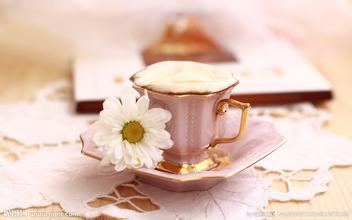Introduction to the production area of grinding scale for the flavor description of El Salvador Pacamara coffee beans
Introduction to the production area of grinding scale for the flavor description of El Salvador Pacamara coffee beans
El Salvador boutique coffee is concentrated in the volcanic rock producing areas of Santa Ana in the west and Charantanan fruit in the northwest. The top 10 cup tests in recent years almost all come from these two producing areas, with an elevation of about 9-1500 meters, mainly bourbon (68%). Followed by Pacas (29%), mixed-race Pacamara, Dulaai and Kaddura accounted for only 3% overall Salvadoran coffee inherits the mild quality of Sino-American coffee, which is soft, slightly sour and has a beautiful sweetness. At the same time, it also has its own characteristics: the aromatic taste is slightly sour and very soft; it is pure and has no miscellaneous flavor, and the taste balance is excellent; the smooth feeling like cream chocolate is impressive; the dense feeling of coffee in the mouth gives the coffee a deep taste and a long finish. The coffee harvest lasts from November to March. The fresh fruit of coffee is picked by hand. Coffee in El Salvador is grown mostly by small farmers, who grow it in the traditional way: almost 100% shade. The coffee harvest lasts from November to March. All the fresh coffee fruits are picked by hand.
Variety producing area
It was first cultivated by El Salvador, and it is still the main producing area in El Salvador. In addition, there are also many plants in Central and American countries, such as Nicaragua and other varieties.
Pacamara is another example of making a name for itself through COE events. In the 90s of the 20th century, some farmers in the Chalatenango producing area of South Song in Charat, El Salvador began to grow Pracamara. In 2006, a farm in this producing area took part in the competition with Pacamara and got the second place. In 2007, a number of farms in the same production area took part in the competition with Pacamara and won the first, third and fourth places. The brilliant achievements made Pacamara pay attention to the origin of the variety.
Pacamara is an artificial hybrid of Pacas and Maragogype, which was first bred by Salvadoran research institutions in the 1950s (mostly 1958). The new variety is considered to be the result of the pursuit of large grain Arabica species and inherits the good characters of the parent plant. Pacas, which has Bourbon lineage, is a native variety of El Salvador and inherits the excellent flavor of the ancient species of bourbon. It was first discovered in 1949. Maragogype is a variety of Typica that first appeared in Brazil. Because of its large bean body, it is known as "elephant bean" elephant bean (Pacamara): its pedigree is very complex, and it is a hybrid of Tibika variety elephant bean and bourbon variety Pacas. Huge beans, second only to elephant beans, is a rising star in El Salvador and a hybrid breed of high-quality coffee all over the world in the past two years. Won two ○○ seven Guatemala and Honduras [COE] double championships, but also arranged to host the top three awards in El Salvador. The name "Pacamara" is very good. It is a compound word of Pacas [Pacas] and elephant bean [Maragogepe]. Pacamara is an excellent variety produced by the Salvadoran Coffee Research Institute from 1957 to 1958. It was not until recent years that it became the darling of fine coffee.

Important Notice :
前街咖啡 FrontStreet Coffee has moved to new addredd:
FrontStreet Coffee Address: 315,Donghua East Road,GuangZhou
Tel:020 38364473
- Prev

Flavor Description of Yegashefi Coffee Processing Method Grinding Scale Variety Introduction of Production Area
Flavor Description of Yerga Sherfi Coffee Grind Scale Variety Region Introduction Floral, tropical fruit, intense sweetness; these are the feelings that rose summer has always brought to us. Properly baked, they make you feel like sipping the fragrance of a bouquet of flowers. Maybe you don't know the story about Rose Summer, which is an ancient native from Ethiopia.
- Next

Characteristics and flavor description of Yunnan small-grain coffee introduction to the quality of taste treatment
Yunnan small grain coffee flavor description taste treatment quality characteristics 1) add an appropriate amount of pure water to the lower seat of the siphon pot (heated pure water can be used to shorten the time of boiling water. In this operation, the amount of water added is 2.5 cups, that is, about 280 milliliters, two cups of water is for guests / friends, and the extra half cup is for the brewers to taste in advance.
Related
- Detailed explanation of Jadeite planting Land in Panamanian Jadeite Manor introduction to the grading system of Jadeite competitive bidding, Red bid, Green bid and Rose Summer
- Story of Coffee planting in Brenka region of Costa Rica Stonehenge Manor anaerobic heavy honey treatment of flavor mouth
- What's on the barrel of Blue Mountain Coffee beans?
- Can American coffee also pull flowers? How to use hot American style to pull out a good-looking pattern?
- Can you make a cold extract with coffee beans? What is the right proportion for cold-extracted coffee formula?
- Indonesian PWN Gold Mandrine Coffee Origin Features Flavor How to Chong? Mandolin coffee is American.
- A brief introduction to the flavor characteristics of Brazilian yellow bourbon coffee beans
- What is the effect of different water quality on the flavor of cold-extracted coffee? What kind of water is best for brewing coffee?
- Why do you think of Rose Summer whenever you mention Panamanian coffee?
- Introduction to the characteristics of authentic blue mountain coffee bean producing areas? What is the CIB Coffee Authority in Jamaica?

